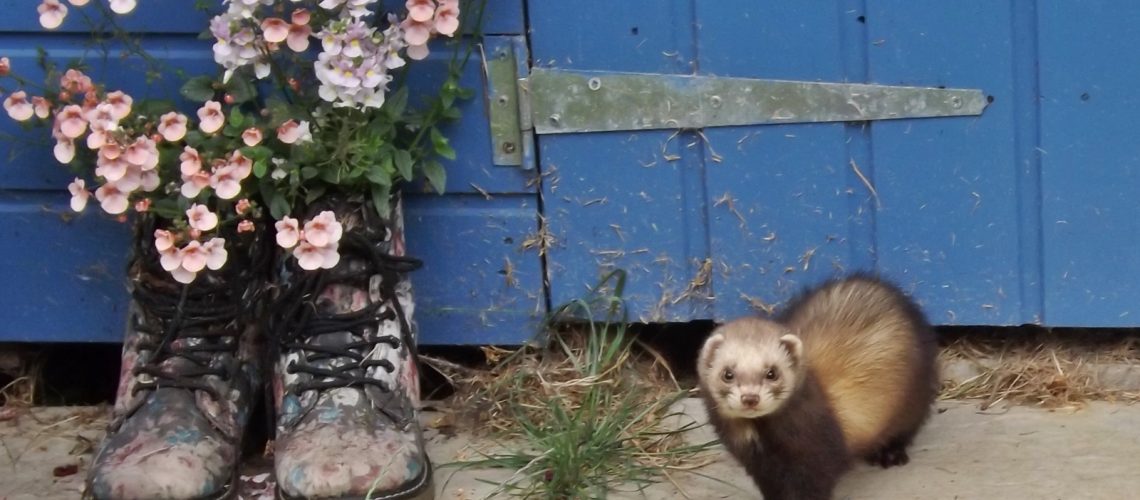
The Trust’s third national polecat survey began in January, with the aim of gathering up-to-date information on the distribution of the polecat and polecat-ferret in Britain. The survey has now been running for six months, during which time we have received a total of 292 records of polecats and polecat-ferrets, and we are hugely grateful to everyone who has contributed these records. What have we learnt so far?
The kits accompany their mothers on hunting trips, during which time they are rather conspicuous: we’ve had a few reports of people who’ve had to wait in their cars for a whole family to cross the road, which can take a while! We’ve also had several reports of both individual polecats and females with kits using gardens in which to den and/or forage. Favourite garden denning spots seem to be under or in sheds, under decking and in log or compost piles. Over the past few weeks my inbox has started to fill up with some wonderful photos of live polecats, which has been a refreshing and welcome change to myriad, and often very grisly, photos of road casualty polecats normally received! We expect the trend of live sightings to continue through the summer until September, when we expect another peak in road casualties as kits disperse from their mothers to set up their own home ranges. Records started trickling in slowly during January and February. During these colder winter months polecats are less active than during the summer months (similar to the people studying them!) and are consequently seen less. In March, we witnessed a large increase in reports and the number of records we received almost tripled, with the majority of these being road casualties: March sees the start of the polecat mating season and amorous males frequently cross roads without paying due attention to traffic! The number of road casualties declined in April. During May and June we observed an increase in live sightings: these early summer months are the polecat breeding season and typically 4-8 kits are born from May onwards. Live sightings tend to peak in the summer months as polecats are more active and become more diurnal.
Although it is too early in the survey to draw conclusions on the polecat’s current distribution, it is possible to make some observations. The polecat seems to be continuing its range expansion from its historical stronghold in mid Wales and the English border counties, into southern and eastern English counties. Many counties in eastern and southern-west England have produced polecat-ferret records, as is expected at the edge of the ‘pure’ polecat’s core range. We have received records from many parts of Wales, although there is currently a gap in south-east Wales from where we’ve yet to receive many records. We also have a lack of records from some of the northern English counties, notably Cumbria (where polecats were reintroduced in the 1980s), Lancashire, Durham and Yorkshire, so are particularly keen to receive records from these areas. In Scotland, the only country from which polecats were probably completely extirpated, we have only received a few records, but these confirm the persistence of a population of polecats/polecat-ferrets in Perthshire, which has resulted from a historical reintroduction.
It will be interesting to see what the next six months brings. Thank you to everyone who has contributed records so far. If you see a polecat, polecat-ferret or feral ferret, please let us know and help to contribute to our knowledge of this understudied species. As well as providing up-to-date information on polecat distribution, another key aspect of the survey is the collection of polecat carcasses, and we have collected more than 50 carcasses so far. These carcasses are currently being stored at the Centre for Ecology and Hydrology and will be used for future analysis on secondary rodenticide poisoning and other research.